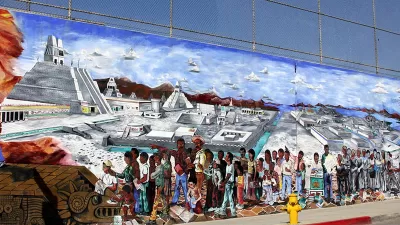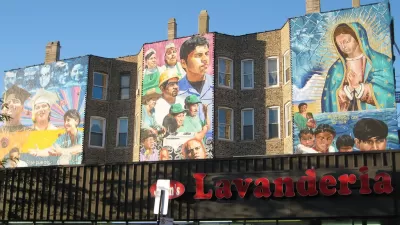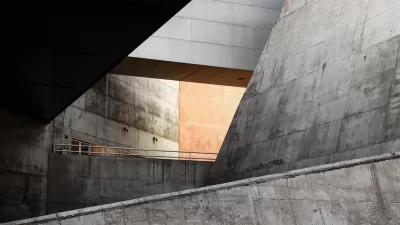Fifty years after the Chicano Moratorium, James Rojas reflects on the future of Latino Urbanism.

James Rojas marks the 50th anniversary of the Chicano Moratorium, a protest against the conscription of young Chicanos to serve in the Vietnam war, with a reflection on the meaning of Latino Urbanism, specifically in East Los Angeles.
Since the protest, which ended in violent disbandment by Los Angeles County sheriffs, Chicano urbanists have reshaped the visual landscape of East Los Angeles. "The charred aftermath of the Chicano Moratorium marked the physical end of Anglo-dominated modernism in East L.A.," writes Rojas.
Departing from the status quo in placemaking, Chicano visionaries, including artists, architects, and citizens, invented and implemented their own unique urban design interventions, says Rojas:
East Los Angeles became the visual manifestation of Aztlan, the mythical region where the Aztecs are said to have originated from. Aztlan was scrawled on many walls alongside gang graffiti. Murals educated and celebrated the power and struggle of the community and were painted on the blank walls of the private and public buildings. ASCO, a group of Chicano artists based in East L.A., used ephemeral interventions, such as a dinner party in a traffic island, performative murals, and sidewalk parades down Whittier Boulevard to create identity through the use of public space.
Looking at East Los Angeles today, the architectural influence of the Latin American architectural movement is clear. Born in the 1960s as the brainchild of a group of Chicano planners and architects, East Los Angeles' El Marcadito was designed "as a community event space based on the design of a market in Guadalajara, Mexico," and stands as a popular reminder of the success and influence of Latino Urbanism.
Given the vibrant relationship of Chicano residents with the built environment, Rojas ends the piece with a pertinent question: "Will Anglo culture assimilate into Latino culture? Or will Anglo landscape incorporate Latino urbanism?"
FULL STORY: The Chicano Moratorium and the Making of Latino Urbanism

Trump Administration Could Effectively End Housing Voucher Program
Federal officials are eyeing major cuts to the Section 8 program that helps millions of low-income households pay rent.

Planetizen Federal Action Tracker
A weekly monitor of how Trump’s orders and actions are impacting planners and planning in America.

The 120 Year Old Tiny Home Villages That Sheltered San Francisco’s Earthquake Refugees
More than a century ago, San Francisco mobilized to house thousands of residents displaced by the 1906 earthquake. Could their strategy offer a model for the present?

HSR Reaches Key Settlement in Northern California City
The state’s high-speed rail authority reached an agreement with Millbrae, a key city on the train’s proposed route to San Francisco.

Washington State Legislature Passes Parking Reform Bill
A bill that would limit parking requirements for new developments is headed to the governor’s desk.

Missouri Law Would Ban Protections for Housing Voucher Users
A state law seeks to overturn source-of-income discrimination bans passed by several Missouri cities.
Urban Design for Planners 1: Software Tools
This six-course series explores essential urban design concepts using open source software and equips planners with the tools they need to participate fully in the urban design process.
Planning for Universal Design
Learn the tools for implementing Universal Design in planning regulations.
Ada County Highway District
Clanton & Associates, Inc.
Jessamine County Fiscal Court
Institute for Housing and Urban Development Studies (IHS)
City of Grandview
Harvard GSD Executive Education
Toledo-Lucas County Plan Commissions
Salt Lake City
NYU Wagner Graduate School of Public Service





























